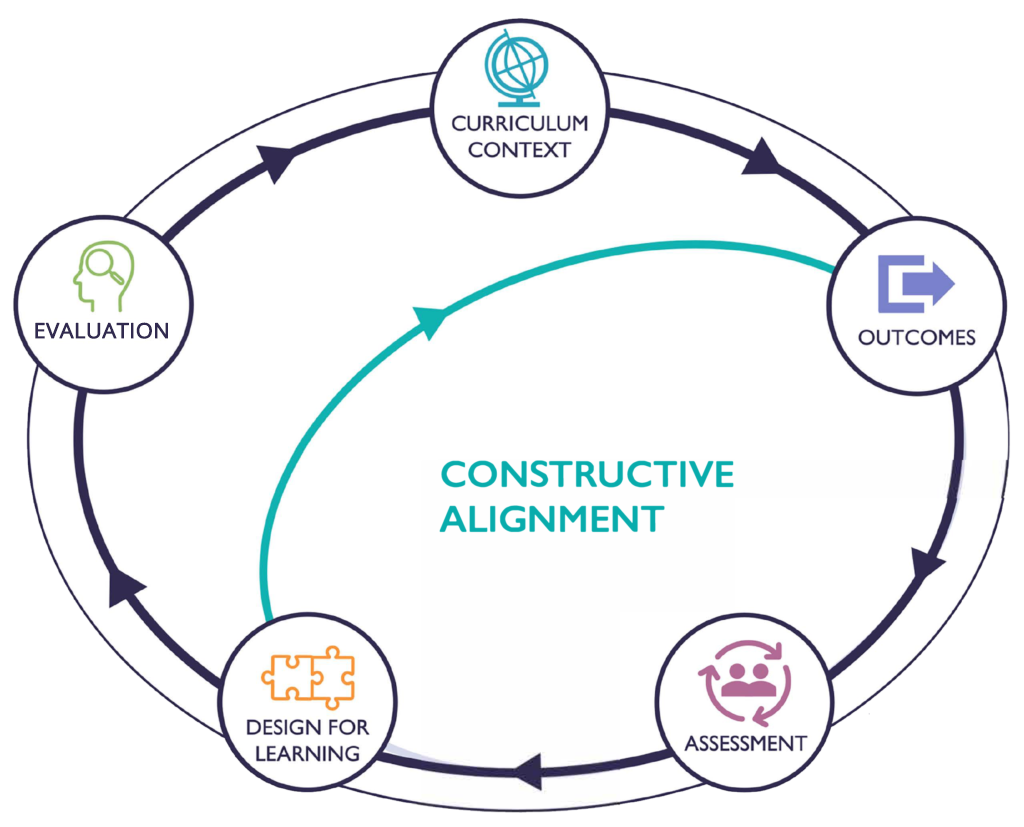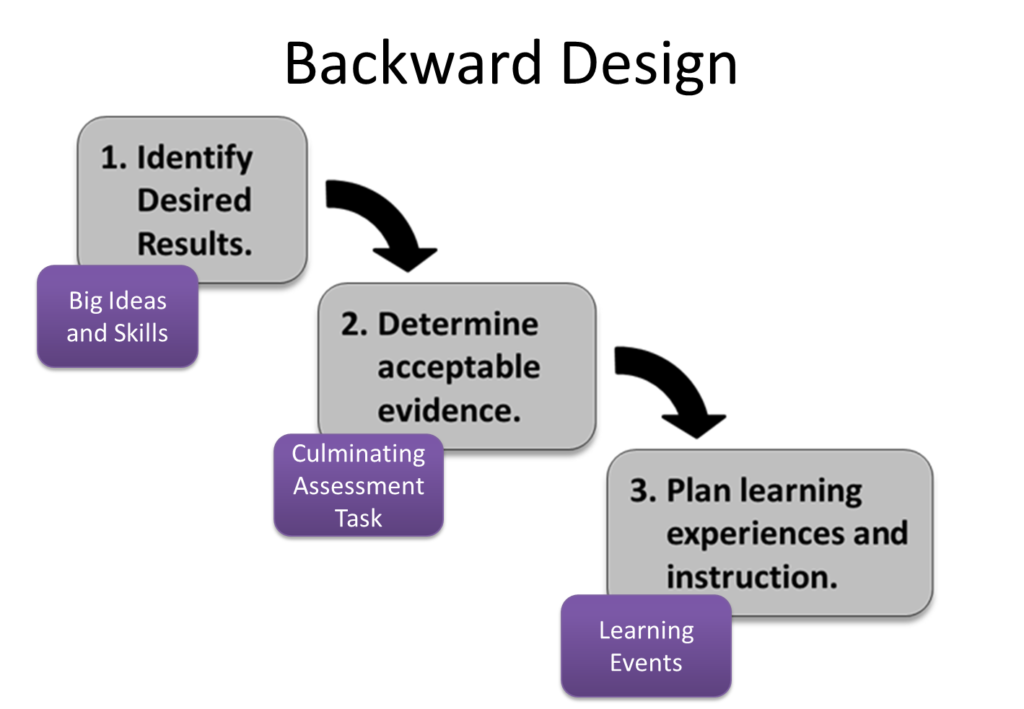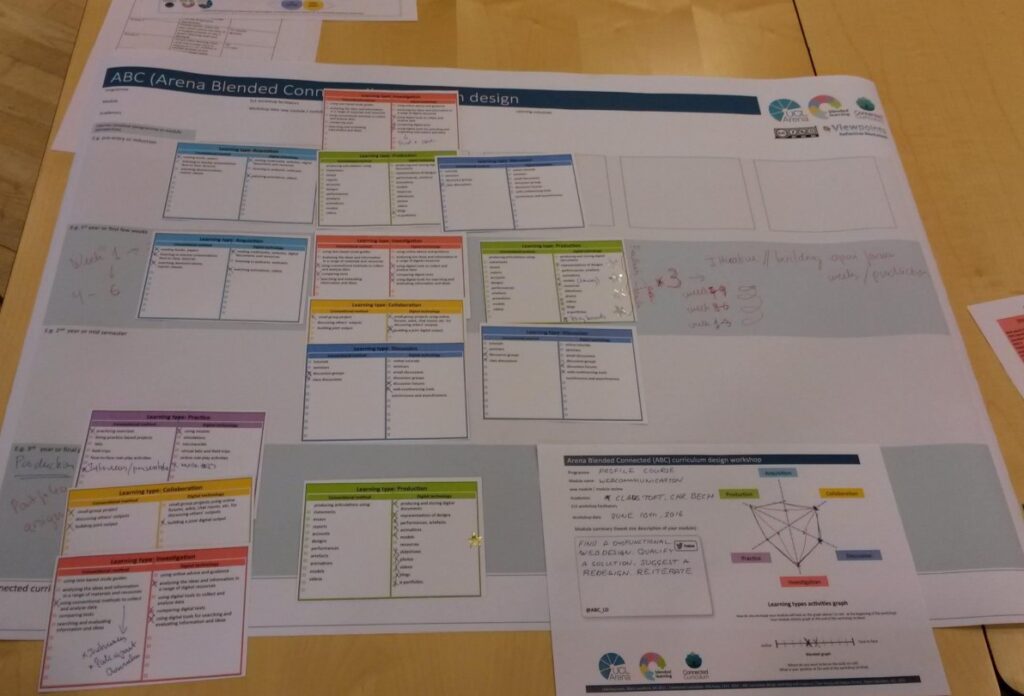Step 2: Plotting the Storyline
Watch video to better understand this resource
Design theories that begin by envisioning story:
Syd Field says know your ending
In 1979, Syd Field introduced his paradigm of structuring the timeline of movies according to a proven pattern; and just like this creative process of screenwriting, the timelines of course design can initially be shaped by “paradigms” of research and experience. One of the most impactful has been Constructive Alignment (CA) and it too starts with knowing the ending you want.
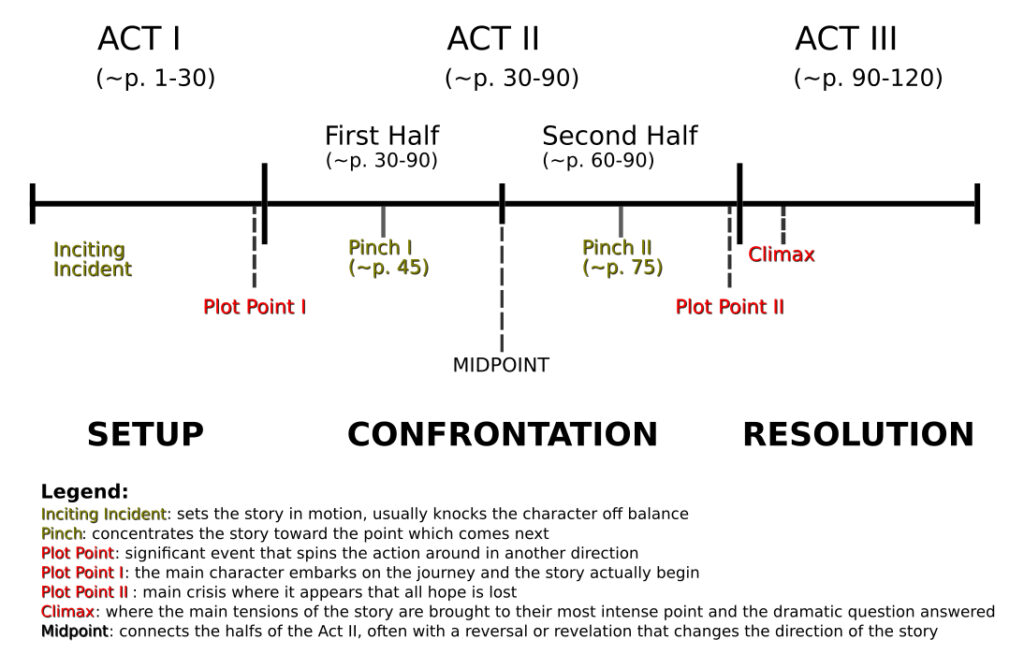
Lazarus, N. (2019, June 7). Utilizing SYD Field’s screenwriting paradigm to understand script timeline Structure By Natalia Lazarus. Syd Field. https://sydfield.com/guest-blog/utilizing-syd-fields-screenwriting-paradigm-to-understand-script-timeline-structureby-natalia-lazarus/
1. Constructive Alignment
One of the most impactive approaches to effective course design is Constructive Alignment (CA) , and it too needs to know the ending in order to tell a story of learning. It does this by starting with the institutionally-prescribed Course Learning Outcomes (CLOs) as targets to align content, interaction and assessment in a clearly functional manner.
The main purposes of stating intended learning achievements are to:
- inform learners of what they should achieve
- inform teachers about what they should help learners to achieve
- form the basis of the assessment system, so that everyone knows what will be assessed
- reflect accurately the nature of the profession into which the learner is being inducted and the professional characteristics that must be acquired.
McKimm, J., & Swanwick, T. (2009). Setting learning objectives. British Journal of Hospital Medicine, 70(7), 406-409. https://doi.org/10.12968/hmed.2009.70.7.43125
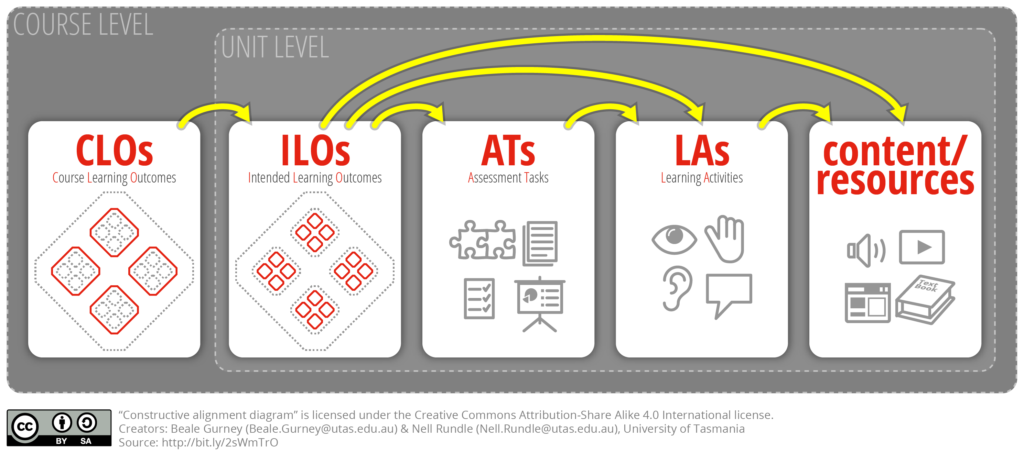
Teaching & Learning. (2021, May 10). Constructive alignment. Teaching & Learning – University of Tasmania, Australia. https://www.teaching-learning.utas.edu.au/unit-design/constructive-alignment
Watch a 1-minute video exemplifying CA in course design:
Cover Image: Centre for Teaching & Learning. (2019, January 18). curriculum mapping primer: mapping courses to program level outcomes. University of Windsor.
For an excellent resource that details Constructive Alignment’s intersection with Bloom’s Taxonomy in a well-detailed manner click here.
2. Backward Design
In many ways, CA and Backwards Design (BD) share many similarities in their approach. Both begin with alignment of content, delivery and assessment to CLOs. It may be said that a slight difference might be that BD emphasizes envisioning what truly fulfilled CLOs look like, and then working ‘backwards’ through the student learning process to articulate the course. Click for a foundational resource on Backward Design.
Avenues: The World School, G. (2013, February 18). Grant Wiggins – Understanding by Design (1 of 2) [Video]. YouTube. https://www.youtube.com/watch?v=4isSHf3SBuQ&ab_channel=Avenues%3ATheWorldSchool
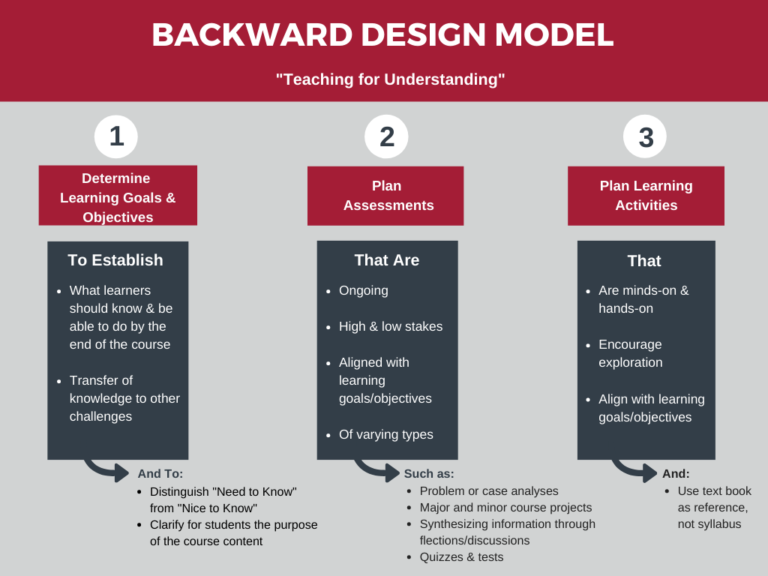
University of Rochester. (n.d.). Backward design : Center for excellence in teaching and learning : University of Rochester. https://www.rochester.edu/college/cetl/faculty/online/backward.html
3. ABC Curriculum Workshop
Another approach where the focus is to first plot out learning goals along a storyline of a course is the ABC Curriculum Workshop developed at the University College London (UCL). It is based on the great work of Dr. Diana Laurillard and her Conversational Framework.
It’s a timed exercise to quickly choose and arrange communication goals for a course, and selecting corresponding learning activities to realize the chosen communication goal to better assist in content selection and assessment design.
The workshop is meant to get the course design process started by producing a macro-storyline of plotted and planned activities, which is then to be further refined into specific lessons and assessments that effectively achieve course and program learning outcomes. Click here for a PDF that outlines a basic workshop’s format.
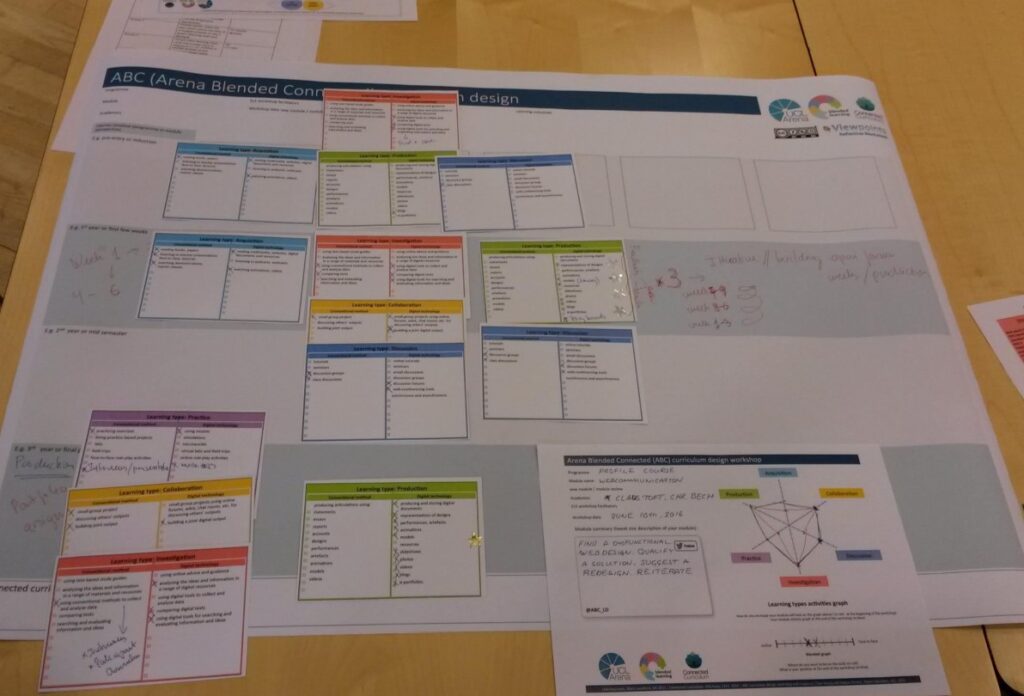
UCL. (2022, January 7). Designing programmes and modules with ABC curriculum design. Teaching & Learning. https://www.ucl.ac.uk/teaching-learning/case-studies/2018/jun/designing-programmes-and-modules-abc-curriculum-design
The Syd Field Paradigm
The Syd Field Paradigm is already based on the same concepts above, but emphasizes the placement and pathways to summative assessments along this course storyline. Just like authentic assessments, it is not ‘what’ content and evaluations are presented, but ‘how’ that is done. As such, understanding where the ‘pinch points’ are going to be can lead to better choices in what form these points of conflict between knowing and assessment can take according to your learner archetypes.
Go to the activity below to start envisioning your macro-storyline of learning and an initial marking allotment:
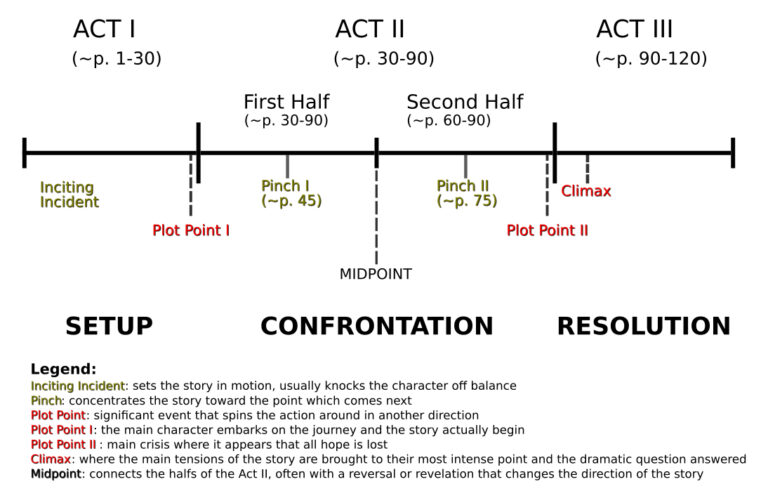
Lazarus, N. (2019, June 7). Utilizing SYD Field’s screenwriting paradigm to understand script timeline Structure By Natalia Lazarus. Syd Field. https://sydfield.com/guest-blog/utilizing-syd-fields-screenwriting-paradigm-to-understand-script-timeline-structureby-natalia-lazarus/
Activity #3 – Plotting Time & Dividing Marks
Example KPU Term Timeline
Instructions: First, get a piece of paper, or any drafting technology you prefer, and use them to sketch out a timeline for a typical KPU term (below). Then, plot which major learning activities you would like to enact and when they may occur within this temporal framework.
Then, make a list of the general allotment of marks you want to give each major component. For example:
- Participation = 15
- e-Portfolio with presentation = 25
- Research report = 25
- Final exam = 35
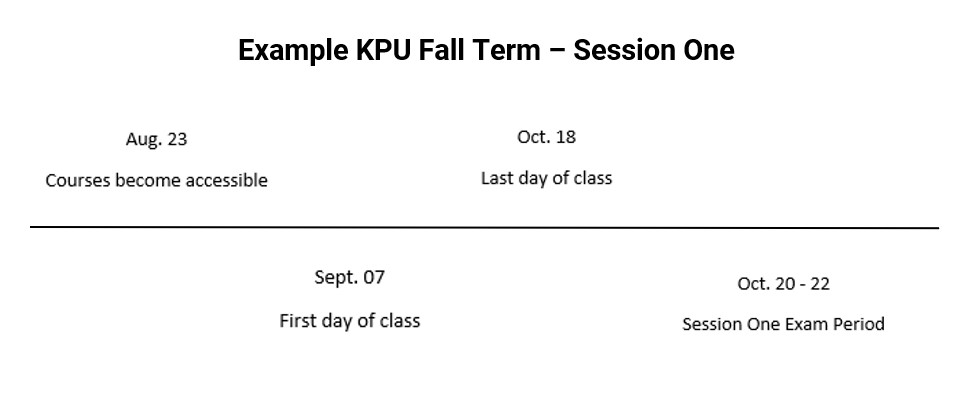
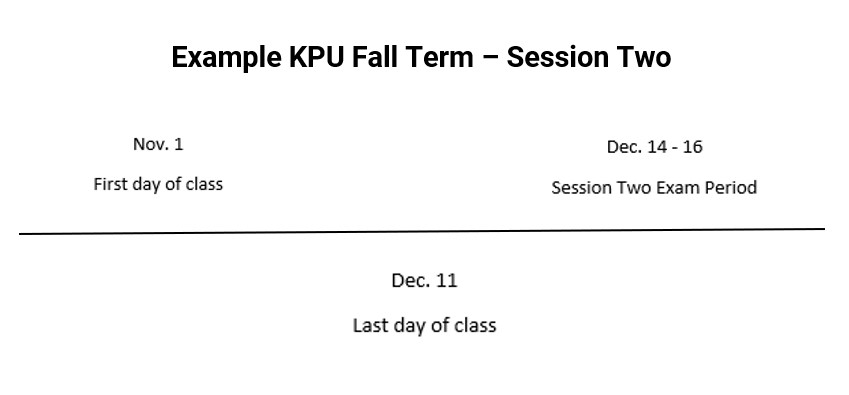
In the next step of the refinement process, you will detail the storyline more specifically by applying instructional scaffolding. This will then reveal more options for distributing large quantities of marks more effectively along the delineated process.

